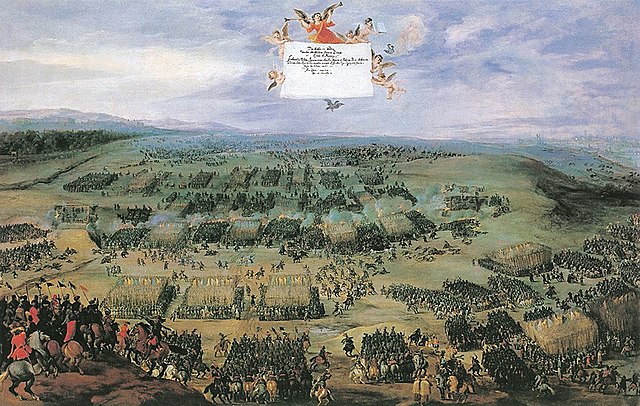1620: A Year In Review
Months and months ago I put a place holder in my blog editorial calendar* to write a “year in review” post for 1620, but I didn’t make any notes telling myself why 1620 mattered. That was probably because I assumed I would remember. Which I didn’t, because I tend to think about events in terms of their context rather than pegging them to an exact date. It’s not that I don’t have dates in my head, it’s just that 1620 wasn’t one of them. (I hear my friends who specialize in American history laughing in the distance.)
In fact, a pretty well-known event occurred in 1620: a group of straight-laced and opinionated English dissenters left the Netherlands, where they had taken shelter, set sail for the New World on a ship called the Mayflower, and landed at a place they named Plymouth Rock. Their story has taken a disproportionately large and highly mythologized role in the shorthand version of American history. Working backwards from 1620: The first English settlers arrived in Jamestown in 1607. The French founded Port-Royal in 1604, and began the fur trade in the 1530s. The Spanish established settlements in Latin America as early as 1508, and founded their first North American settlement, St. Augustin in 1565. **
It turns out that the desire for religious freedoms, or at least religious dissent in the technical sense, was a recurring theme in 1620.
- One event that I suspect is not on most Americans’ historical radar*** popped up over and over on my historical timeline sources. On November 8, the Catholic League under Johann Graf von Tilly defeated the Palatinate-Bohemian army of the Protestant Union at White Mountain near Prague. I must admit, my first thought was to ignore it, because I generally don’t include individual battles in these posts. (A tinge of historical parochialism on my part may have contributed as well.) On closer inspection, the battle turned out to be a key event in the 30 Years’ War,**** which was certainly did not get a lot of print inches in the world history textbooks of my youth but was not a small event. (Roughly twenty percent of the population of the German states were killed over the course of the war.) The Catholic victory at the Battle of White Mountain allowed the Hapsburg dynasty to claim the crown of Bohemia, which had previously been bestowed on a ruler elected by his fellow princes of Bohemia. The Palatine-Bohemian phase of the Thirty-Years’ War would continue through 1623, but the Battle of White Mountain effectively ended constitutional rule in Bohemia, such as it was, and established an authoritarian government in its place that would last until the Austro-Hungarian Empire was dismembered at the end of World War I.
- A series of rebellions against royal authority by the French Calvinist Protestants known as Huguenots began late in 1620. As is often the case, the rebellion was rooted in the loss of previously enjoyed rights. King Henri IV (1553 -1610) had issued the Edict of Nantes in 1589, giving French Protestants civil rights that had previously been denied them, including the freedom to worship in their own way.***** His successor, Louis XIII, and more importantly Louis’s mother, Marie d’Medici, were less tolerant of Protestantism and began unraveling those protections. In December 1620, the Huguenots gathered in La Rochelle and decided to form an independent state within a state, modeled on the Dutch Republic’s successful resistance against Spanish rule. The rebellion did not end well. Neither did the two that followed. The Huguenots were actively persecuted under the rule of Louis XIV and the Edict of Nantes was revoked in 1685. As a result, thousands of Huguenots workers fled France and established themselves in Protestant cities across Europe that were happy to welcome literate, highly skilled workers.
In short, religious intolerance benefits no one.
*A rather grandiose name for a Scrivener file with a lot of separate documents in which I capture ideas that may or may not become blog posts. Sometimes all I have is a subject, not a story. And as any freelance writer will tell you, that’s a hard sell. Even when the editor you’re pitching is you.
**If you’re interested in looking at the Pilgrims’ story from the perspective of the people who were already living in what is now Massachusetts when they arrived, I recommend this article: https://time.com/5911943/thanksgiving-wampanoag/
***Including mine.
**** Here’s the short version: Reformation vs Counter-Reformation. Here’s a slightly longer version: The Third Year’s War was actually a series of wars, in which Protestant and Catholic princes battled for control of the Holy Roman Empire. The conflict began when the Protestants of Bohemia rebelled against Emperor Ferdinand II, but soon spread throughout the empire and included most of the European powers at one point or another.
*****Henri had himself been a Huguenot prior to converting to Catholicism in order to secure his hold on the crown. He is reported to have justified this by saying “Paris is well worth a mass.” Like Marie Antoinette’s supposed statement “Let them eat cake,” there is little reason to believe he said it/






My inner history nerd is loving this so much right now.